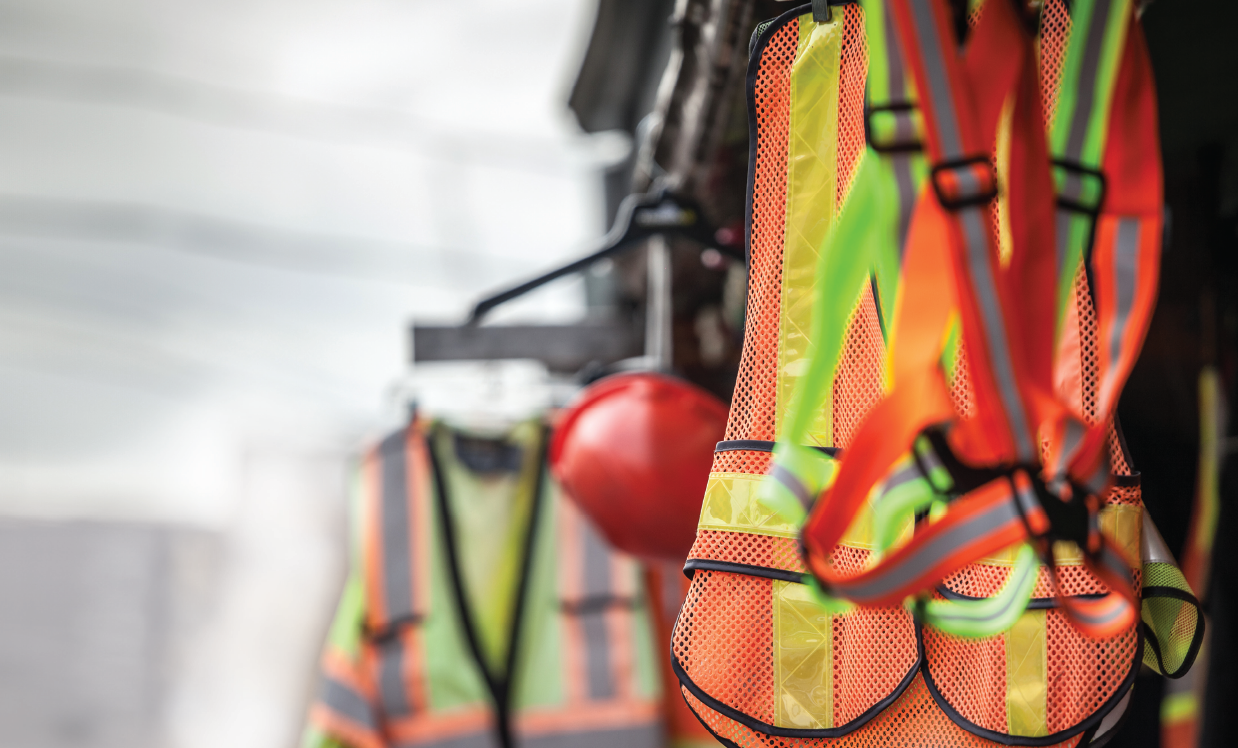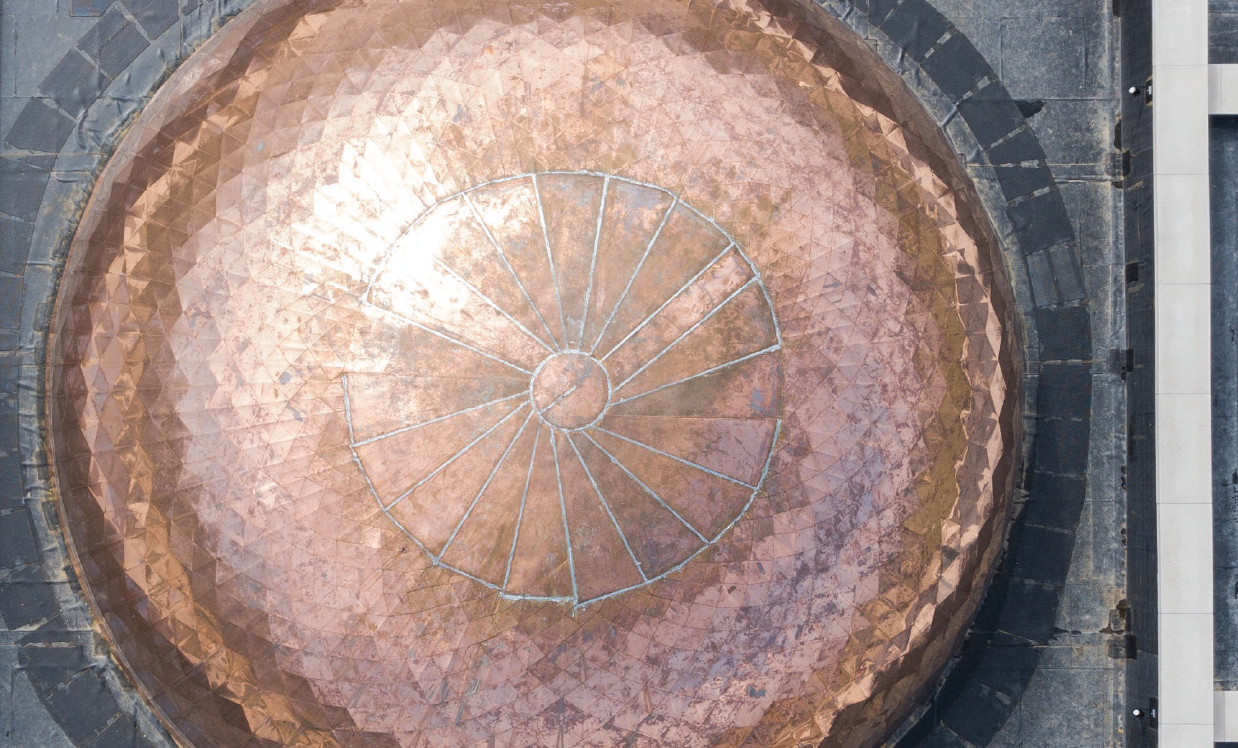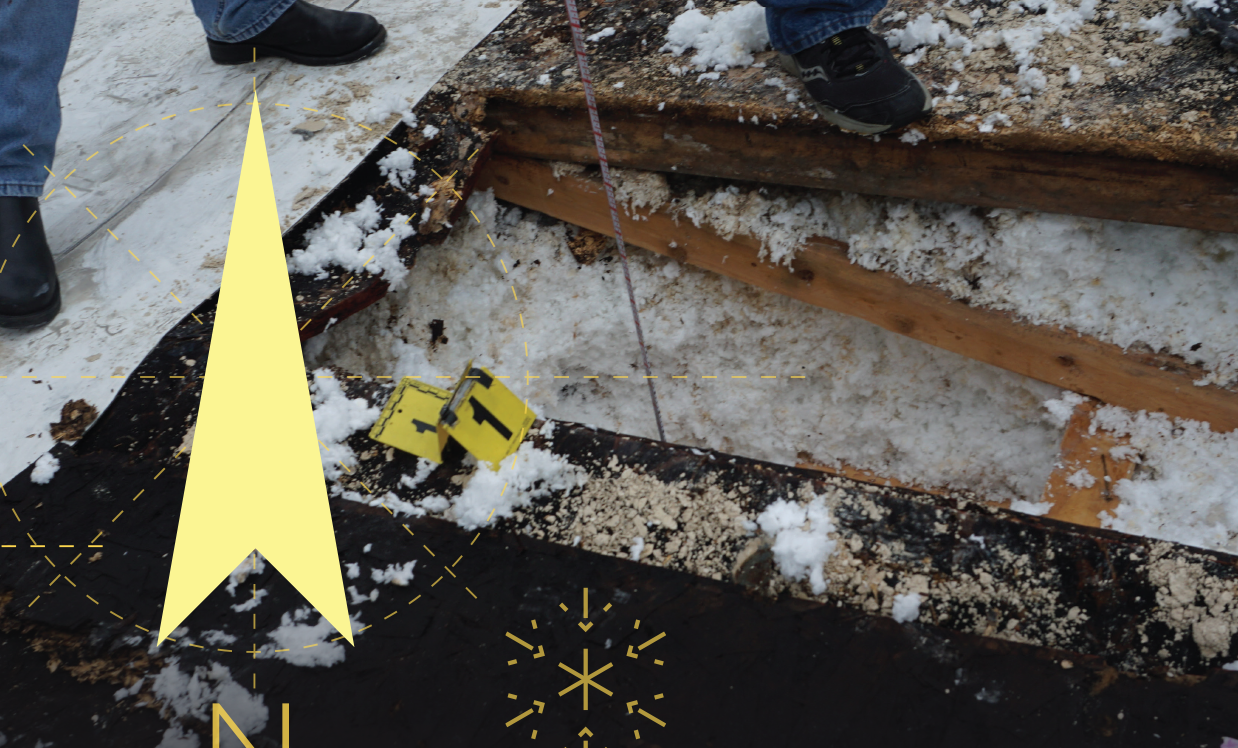Severe storms in the U.S. have been responsible for billions of dollars of insurance company losses during the past several years. Hailstorms are a significant portion of those losses and often result in roof system replacements, especially for asphalt shingle roof systems, which cover more than 75% of single-family homes in the U.S. When replacing their roof systems, homeowners look to roofing contractors for guidance about selecting the right products and trust their recommendations.
To help educate insurers, roofing contractors and consumers, the Insurance Institute for Business & Home Safety® has spent years collecting data and identifying the relative performance differences of impact-resistant-labeled asphalt shingles. IBHS is a nonprofit, scientific research organization funded by the property insurance industry. Charged with advancing building science, influencing residential and commercial construction, and creating more resilient communities, IBHS recreates real-world severe weather conditions to test buildings and building components, including asphalt shingles, against wind, wind-driven rain, hail and wildfire.
IBHS recently developed a new, peer-reviewed test method for hail impact resistance to provide a better connection to real-world performance against hail; tested widely sold basic impact-resistant asphalt shingles; and published the results in its Roof Shingle Hail Impact Ratings document. The protocol and performance ratings inform consumers wanting to purchase better performing products, roofing contractors looking to distinguish themselves from their competition and manufacturers seeking to improve their products.
Background
Hail can occur with any strong thunderstorm, which means hail is a threat to roofs throughout the U.S., especially east of the Rocky Mountains. All asphalt shingles when first installed should offer some degree of protection against hailstone impacts. Impact-resistant asphalt shingles are marketed as performing better in hailstorms. However, not all products labeled as such perform equally. Consumers deserve to have confidence that impact-resistant shingles live up to marketing claims.
There are two types of impact-resistant shingles. One type, which has become a legacy manufacturing technique, includes adding mesh or scrim reinforcement to the backside of a standard, oxidized asphalt shingle. The second type is made by modifying the asphalt with polymers, which has become the more popular technique.
Impact-resistant shingles have passed one of two standardized tests: UL 2218, “Impact Resistance of Prepared Roof Covering Materials,” which uses steel balls, or FM 4473, “Specification Test Standard for Impact Resistance Testing of Rigid Roofing Materials by Impacting with Freezer Ice Balls,” which uses pure water ice balls. Both tests are based on the relationship between hailstone diameter and kinetic energy and are rooted in research from the 1930s that assumes damage severity is directly tied to a projectile’s kinetic energy. Projectiles in the tests range in size from 1¼ inches for Class 1 to 2 inches for Class 4.
For UL 2218, a steel ball bearing is dropped onto a roofing test panel from a height necessary to replicate the theoretical kinetic energy that spherical hailstones of similar diameter would have. Each target location is impacted twice in the same spot. Performance is evaluated by visually inspecting the impact locations on the back side of the shingle bent over a mandrel for a crack or tear under magnification, and a pass or fail determination is made.
For FM 4473, a pure water ice ball free of cracks and air bubbles is launched perpendicularly at a roofing test panel at a speed necessary to develop the intended kinetic energy. Again, each target location is impacted twice in the same spot. Performance is evaluated visually from the top and bottom for any sign of cracking or breakage, and similar to the UL 2218 test, a pass or fail designation is assigned to the product.However, neither test accurately replicates the type and severity of damage found on roofs after hailstorms. These test standards were developed before the material properties of natural hail were known. Although historical hail studies had quantitative data about mass, diameter and density, the strength or hardness of hailstones was described qualitatively.IBHS field research
To fill this knowledge gap, IBHS launched a field study in 2012 to begin collecting quantitative data about hailstone properties to expand understanding of the phenomenon. Researchers followed severe thunderstorms to collect hailstones and measure their masses, diameters and strengths.
IBHS designed an instrument to measure the hardness, or compressive strength, of hailstones by measuring the amount of force needed to fracture a hailstone. The data provides a deeper understanding of hailstones’ aerodynamics, kinetic energies when they reach the ground, mass-to-diameter relationships and strengths.
IBHS then developed a second field instrument: an impact disdrometer. A disdrometer collects insitute data and measures how much energy a hailstone imparts on a surface to further understand hailstone size distribution and how size varies within a storm.
The disdrometers were deployed in an array ahead of thunderstorms and captured data of the swaths of hail produced by storms. IBHS was the first to use 3D laser scanning technology to scan and produce highly detailed digital models of natural hailstones. IBHS then printed 3D hailstones and flew the models in vertical wind tunnels. These digital models allowed more detailed assessments of hail aerodynamics.
IBHS has collected thousands of hailstones and observed dozens of storms, enabling it to establish the largest research-grade database of hailstone characteristics. Data analysis revealed natural hail is, on average, slightly stronger than pure ice but ranges in strength depending on the air pockets trapped inside during hailstone formation. The range in strength produces different modes on impact. It also was found that existing test methods overestimate hail’s mass, fall speed and impact energy. Additionally, the data disproved a long-held belief that hailstone strength and density were correlated.
Working with collaborators at the National Center for Atmospheric Research; Penn State University, University Park, Pa.; University of Oklahoma, Norman; and Johannes Gutenburg University, Mainz, Germany, researchers were able to rapidly advance knowledge of hail and redefine the relationship between hailstone size, its fall speed and energy to improve laboratory testing and paved the way for a new test method.
Into the lab
Armed with field data and the resulting new insights, IBHS researchers developed a method to recreate these properties in the laboratory for use in a new test method that would produce damage more representative of natural hailstorms.
Initially, to prove ice could be created with the density of natural hailstones, seltzer water was used with conventional injection molds. The bubbles in the carbonation trap gas in the ice during the freezing process to mimic the properties of hailstones observed in the field.
Although the proof-of-concept testing was successful, it wasn’t efficient and did not produce enough controllability for true laboratory test applications. To create the volume of laboratory-manufactured hailstones needed, IBHS worked with Accudyne Systems Inc., Newark, Del., to develop and patent a hail manufacturing system with the ability to mass produce hailstones for testing. The machine allows IBHS researchers to control the properties of ice by adjusting the amount of diffused carbon dioxide, the pressure in which gas is diffused into the water, temperature and freeze time to produce ice that matches the variety of hailstone strengths observed in the field.
The system can support molds to create hailstones between 1 and 4 inches in diameter. The damage created by these manufactured hailstones is highly representative of that produced by natural hailstones.
After recreating hailstones in the laboratory in a controlled, repeatable way, IBHS researchers learned three things can happen when hail hits a roof:
- A hard bounce impact (a hailstone bounces off an asphalt shingle with the hailstone remaining nearly intact)
- A hard shatter impact (a hailstone fractures into many pieces leaving no ice behind on a shingle)
- A soft impact (a hailstone turns to slush upon impact with a shingle)
These three impact modes occur because of variations in strength and density of hailstones observed in the field. The two hard impact types typically cause asphalt shingle granule loss, deform shingles, leave behind shingle dents, and create breaches or tears. The soft, slushy impacts also cause granule loss but leave less noticeable deformations.
Each of these damage types can reduce a shingle’s functionality. Dents and tears can allow water to penetrate a shingle. This can compromise a shingle’s water-shedding function and lead to water reaching the underlying deck and possibly entering a home’s interior. Although not an immediate concern, loss of granules exposes the asphalt to ultraviolet radiation, causing it to degrade and become more brittle with time and can reduce the shingle’s fire resistance classification. This can shorten the useful life of an asphalt shingle roof system and potentially make it more susceptible to the next hailstorm.
Test protocol
IBHS developed the IBHS Impact Resistance Test Protocol for Asphalt Shingles to highlight high-performing products and raise the bar for others. The new protocol specifies the method and criteria for laboratory-manufactured hailstones to test the impact resistance of asphalt shingles. The publicly available IBHS asphalt shingle hail impact ratings are based on 2-inch hail results. A hail cannon launches hailstones perpendicularly at roofing test panels at speeds that mimic the current scientific assessment of kinetic energy of natural hailstones for the given diameter.
Perpendicular impacts impart the most severe impact energy per square area by testing the worst-case impact for a shingle.
The IBHS test panel is the same configuration used in the UL 2218 test method: a 3- by 3-foot frame that includes a middle structural member simulating a roof rafter or truss. The test panel has a plywood deck, under-layment and shingles installed according to manufacturer instructions. The IBHS test method requires the shingles be purchased via the distribution chain in the same way a roofing contractor would order shingles and how a homeowner would receive them.
The IBHS test method consists of the following:
- When testing three-tab shingles, 20 impacts per hailstone size are required.
- When testing architectural shingles, 40 impacts per hailstone size are required (20 on the single-layer portions and 20 on the multi-layer portions).
- Impacts are focused on the main field of the shingles, avoiding edges, joints, corners, the outer types frame and middle structural member.
- The IBHS test protocol impacts a targeted location once because duplicate impacts can obscure damage from initial impacts.
- For each hailstone size, an equal number of hard and soft impacts are required. Some variation is allowed between the hard shatter and hard bounce modes. This ensures the protocol captures a realistic performance expectation for a product.
Damage assessment
The IBHS test protocol evaluates three damage modes: presence of a tear; volume of dents and ridge of dents; and area of granule loss. Capturing performance across these damage modes accounts for the different damages observed from the three types of impacts to accurately distinguish product performance.
IBHS developed an objective tool to evaluate damage and improve on the pass-or-fail ratings of the existing test methods that were vulnerable to human error and subjectivity. IBHS worked with a software development company to create an image-processing tool known as the Hail Impact Parameterization System to measure the volume of deformations and the area of granule loss on a shingle. The application uses a series of more than a dozen photos to create a 3D model of an impacted shingle that can then generate precise measurements of damage.
The tool can measure dents, ridges of dents, individual granule loss and areas of patch granule loss. By collecting these quantitative measurements, the damage evaluation can go beyond pass or fail and quantitatively rate damage severity. These measurements allow the damage assessment to consider the severity of damage. The third damage mode is assessed by expert judgement and visually assigned a severity level.
For the IBHS test protocol, the damage evaluation is assessed from a shingle’s top side. This is the same vantage point a roofing contractor or insurance adjuster would have to assess a roof system after a hailstorm.
A severity score for each damage mode is determined for each of the 20 impacts for three-tab products or 40 impacts for architectural products for a given hailstone test size. The severity scores are numerically averaged to determine an individual impact severity score. All individual impact severity scores then are averaged to determine a product’s overall performance evaluation rating. This method provides more confidence in a product’s performance ability than past standardized tests.
The ratings
For the release of the test protocol and initial ratings, IBHS tested eight of the most widely sold, basic impact-resistant shingles on the market in April 2019. IBHS publicly released the protocol and ratings in June 2019.
Products are rated Excellent, Good, Marginal or Poor in overall performance as well as in each damage category: dents/ridges, tears and granule loss. By providing performance ratings by damage category, consumers gain additional insights into product performance.
As scientific understanding of hailstorms continues to grow, homeowners and roofing contractors can use this extra information to select asphalt shingles based on the primary damaging hail characteristics in their regions. For example, the region along the front range of the Rocky Mountains experiences many hailstorms but often sees smaller hailstones and more hailstones per square foot than a location like Dallas-Fort Worth, and an asphalt shingle with good granule loss scores would be an effective product in this region.
With the release of its ratings, IBHS committed to retest all products every two years and to test new products within six months of their release to ensure the ratings reflect products being installed on roofs in the U.S.
When the ratings initially were released in June 2019, one of the eight products tested received a poor rating. Less than six months later, that product no longer was available for purchase, demonstrating manufacturers’ eagerness to improve their products. The initial ratings included five products rated as good or excellent.
During the following two years, shingle manufacturers continued to improve products, and two additional scorecard updates incorporated new products. For the first scheduled retest of products, released in June 2021, nine basic impact-resistant shingles were tested; eight of the nine products earned a good or excellent rating. These improvements will not change the performance of products already installed; however, new construction and reroofing projects will benefit from asphalt shingle manufacturers incorporating the latest science to improve their products.
The shingle performance ratings are part of the IBHS FORTIFIED Home™ program, which helps homeowners seek more resilient roof systems. Products rated as good or excellent qualify for use on an IBHS FORTIFIED Home—High Wind & Hail designation.
As hailstorms continue to occur, the IBHS Impact Resistance Test Protocol for Asphalt Shingles will continue to provide manufacturers with important performance data and contractors with critical product selection information for customers in hail-prone regions.
To learn more about the IBHS FORTIFIED Home™ program, see “Building stronger buildings,” June 2014 issue.ANNE COPE, P.E., is chief engineer at IBHS, and IAN GIAMMANCO is senior director for product design and lead research meteorologist at IBHS.



